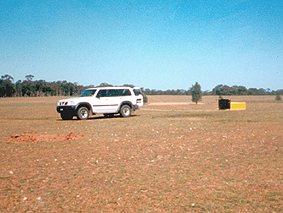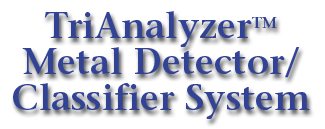|
System
Development
The
TriAnalyzer was developed by MAI specifically to overcome the
inadequacies of conventional metal detectors and ground
penetrating radar, addressing the requirements of small to
medium-size hard rock exploration and mining companies. The
TriAnalyzer detects and identifies concentrations of Group VIIIB,
IB, and certain IIIA and IVA metals of the Periodic Table of
Elements, either separately or in combination. Coverage is in a
swath approximately 1 meter wide to depths of 2-3 meters.
Continual improvements to sensor handling and increased
functionality enable better depth location for minerals of
interest.
Efficient
Exploration Operations
Deployment of the
sensor behind a suitable vehicle with the optional sled allows
exploration surveys to determine and target metal concentrations
at a brisk pace with far fewer false positives ("hot rocks"
and "junk") than other methods in common use. The
Classifier Unit can be temporarily installed in the vehicle and is
controlled by the nominated operator. Greater depths can be
achieved by employing additional receivers at greater offsets.
Assay
Returns Positive Results
MAI's TriAnalyzer
Metal Detector/Classifier System has been fielded at several sites
in Australia. Unlike most metal detectors and all ground
penetrating radars, the TriAnalyzer had no problems penetrating
ironstone and conductive clays. The Classifier (group chemical
identifier) correctly identified significant concentrations of
metals in the groups of interest. Although the metals of Group 1B
(copper, silver, gold) appear identical to the Classifier Unit, it
does not confuse them with iron, zinc, or other metals. Ferrous
scrap and other low value metal compounds are identifiable as
such, thus saving valuable time and effort by prospectors,
exploration geologists, and geophysicists.
Caveats
Unlike hand-held metal detectors that
only reach to depths easily accessible with a hand shovel, the
TriAnalyzer reaches down to depths of several meters. A
drill-rig or back-hoe is distinctly useful to extract samples of
materials identified by the TriAnalyzer. A field geochemical
laboratory kit is helpful in preliminary determination of
sample contents and concentrations.

|



